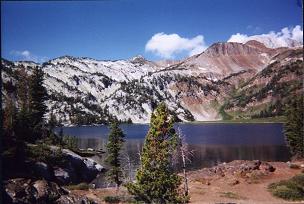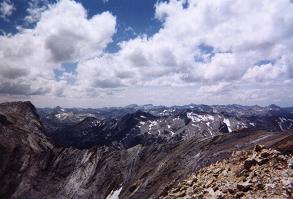
Note the big boulder at near left;
Matterhorn at extreme upper right (gray slope);
and the puffy, white clouds.

|
|
Ice Lake from the east shore. Note the big boulder at near left; Matterhorn at extreme upper right (gray slope); and the puffy, white clouds. |

|
|
View southwest from Sacajawea Peak's summit towards numerous mountains in the Wallowa Range. Matterhorn is at far left, accessed via the foreground ridge. |